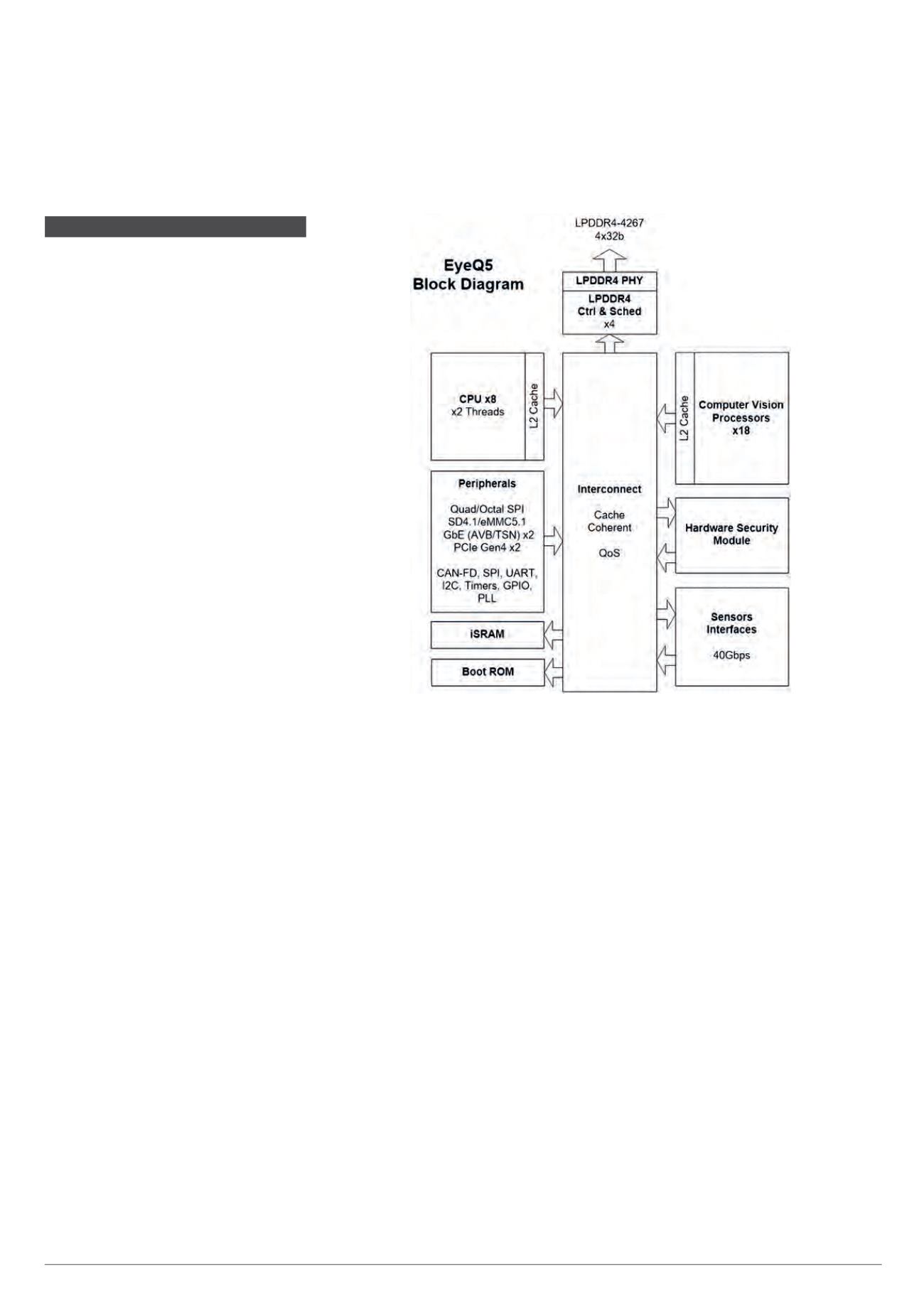

8
Platform one
June/July 2016 |
Unmanned Systems Technology
Driverless cars
Road ahead for data fusion
Chip suppliers are positioning
themselves for the transition from
advanced driver assist systems (ADAS)
to fully autonomous driverless cars as
the architecture of the vision systems
changes (writes Nick Flaherty).
“We are certainly in the early days of
autonomous driving already, and we
believe it’s a full progression from ADAS to
full autonomous operation, not a separate
category,” said Brooke Williams, business
manager of the ADAS system-on-chip
(SoC) business unit at Texas Instruments.
TI has shipped more than 15 million
SoC devices for front camera, surround
view, radar systems and sensor fusion to
15 tier one suppliers that are selling to 25
car makers for 100 separate lines.
“The building blocks are in there now,
but to enable more advanced driving,
fusion of that data needs to be done in a
very intelligent way,” Williams said.
“As things progress to autonomous
operation there will need to be a higher
level of data integration, and what we are
already seeing is the centralisation of that
edge signal processing, so we will see
dumb sensors feeding raw image data
into a central location.
“When we start to see raw data
movement, that’s when we need a lot
more signal processing or a board with
multiple SoCs. The beauty is that the
architecture for image processing and
control is heavily optimised for algorithms
that run on the edge or in the middle.
“For centralised control you need to
have a very efficient architecture, so when
we talk about front camera algorithms
they are the most challenging.
“You have to run six to ten algorithms
on a single device, and that has to be in
a very low power envelope of 2-4 W, and
very few architectures can handle that
level of processing at that power,” he said.
While TI would not comment on
the next generation devices for this,
ST Microelectronics has extended its
relationship with Israeli chip designer
Mobileye for exactly this application.
The two are working on the fifth-
generation EyeQ5 SoC as the central
computer for performing sensor fusion
for fully autonomous driving vehicles.
The chip will be designed in advanced
10 nm or below FinFET silicon technology
with eight multi-threaded CPU cores
coupled with 18 cores of Mobileye’s next-
generation vision processors.
This will provide eight times the
performance of current devices,
processing 12 Tflops with a power
consumption of less than 5 W.
Engineering samples of EyeQ5 are
expected to be available by the first half
of 2018, with development boards in the
second half for running traditional computer
vision but also neural network algorithms.
“EyeQ5 is designed to serve as
the central processor for future fully
autonomous driving for both the
sheer computing density – it can
handle around 20 high-resolution
sensors – and for increased functional
safety,” said Prof Amnon Shashua, co-
founder, CTO and chairman of Mobileye.
“This continues the development
Mobileye began in 2004 with EyeQ1,
with optimised architectures to support
intensive computations at power levels
below 5 W to allow passive cooling in an
automotive environment.”
Mobileye is also adding a hardware
security module to the chip so that
system integrators can support over-
the-air software updates and secure
in-vehicle communications. Creating the
root of trust is based on a secure boot
from an encrypted storage device.
The data interface is also vital, and
EyeQ5 will support at least 40 Gbit/s
through two PCIe Gen4 ports for inter-
processor comms with other chips.
The EyeQ5 SoC is designed to be the central processor for fully autonomous driving









